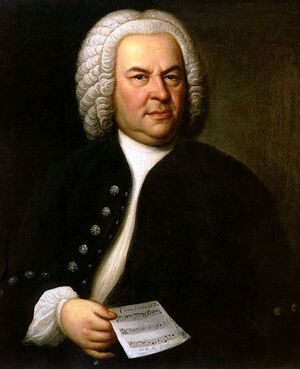Johann Sebastian Bach


Johann Sebastian Bach (1685–1750) was one of the highest channels for the flow of the fires of Aries ever to walk the earth. He was the first of a long line of the Bach musical family to consecrate his talents entirely to God.
The enormity of his musical output reflects the tireless activity of his Arian nature. The independence of the Arian nature must encapsulate the soul of one who is daily dying to be born again. The mark of the Arian is the ability to make one’s way alone, and that aloneness the Arian finds in the all-oneness of God.
The nature of Aries
The heart of Aries is the heart of every sun center. The heart of man is like unto the sun of each solar system, and that is the focal point for the only begotten son of God to all the creation. The Christ of man is anchored in the heart, in the threefold flame of love, wisdom and power. This flame forms the magnet of life, and man himself is a starry body revolving around the center of God’s being by the magnetic attraction of God’s heart in polarity with man’s heart.
The Toccata and Fugue in D Minor
The beings who ensoul the consciousness of the Father-Mother God in the center of our solar system are called Helios and Vesta. We have heard of Alpha and Omega from the writings of John the Revelator, and these are the beings of the Father-Mother God in a greater sun, a higher sun that we call the Great Central Sun. And thus, the twin flames of our solar awareness, which is our awareness of the sun of God’s being, is anchored through Helios and Vesta in the physical sun of our solar system. That physical sun is the symbol of a spiritual Sun, or Presence, behind the sun that is the source of the life-giving energies of God. Hence, you can see the ancient sun worshipers directing their energies to the sun, to the spiritual sun of man.
Bach in his Toccata and Fugue in D Minor did no less than translate the energies of the magnet of God’s love, wisdom and power to music. He portrayed the flow of energy from the heart of God to the heart of man for the transition of fire to air.
You will find that Bach’s music is mental as compared to that of Rachmaninoff, who is of the later Romantic school, which engages more with the emotions. But after you first become accustomed to the discipline of this mental music, you go behind the music and find the heart—just as much heart as any music of the Romantic school. And thus in this Toccata and Fugue are the strengthening, purifying, spiritualizing energies that quicken the mind through the heart.
Meditating upon this composition is an experience in moving through the chambers of God’s heart and hearing the releases of the threefold flame and transition of fire through the mental analysis of the Logos. And following the music and each note disciplines the mind to follow the word of Christ and the forms of his mind.
The forms of the mind of Christ are captured in the work of Bach. And by having these perfect forms in our subconscious, we are open, then, to be receivers of the ideas of Christ.
Sources
Elizabeth Clare Prophet, October 7, 1973.
